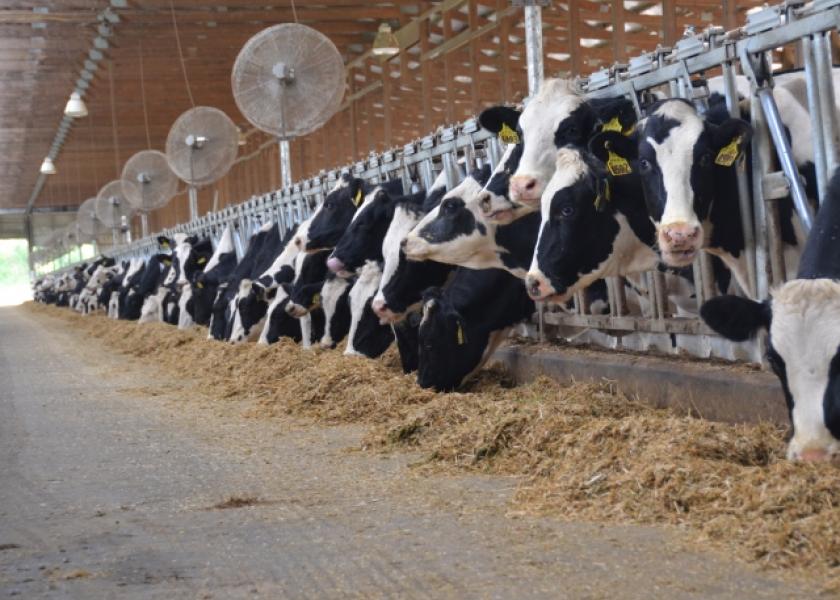Six Signs She May Be Lame

Lame cows lead to lame production. It’s a tale as old as time. In fact, even moderate cases of lameness can have a negative impact on an animal’s milk production, reproductive performance and overall health, not to mention the repercussions it can have on animal welfare.
While the effects lameness can have on dairy cattle are easy to see, identifying lame cows can be harder to catch. That’s why Carly Becker, former dairy extension educator for Pennsylvania State University, says it’s essential for farmers to identify and treat lame cows as early as possible.
“It is important for a producer to identify lame cows and treat them in a timely manner. Even with all the known negative effects of lameness for the cow and the producer, lameness remains a common issue on dairies today,” she says. “The economic impact of lameness is significant and the second most important step for effective lameness management, after prevention, is identification.”
According to Becker, one common barrier that hinders lameness identification is subjectivity. What one producer may consider lame may look relatively normal to another. Additionally, cows, who are animals of prey, have mastered the art of hiding their injuries, making them very good at hiding the pain associated with lameness.
To help pinpoint animals experiencing problems with lameness, Becker suggests looking for the following issues:
- Changes in gait
- Increased lying time
- Decreased dry matter intake
- Weight loss
- Changes in posture and body movements
- Changes in weight distribution
Farmers and employees should always be on the lookout for these common lameness indicators. According to Becker, the best time to have a keen eye is when moving animals to and from the parlor.
“The first step to improving lameness identification is walking through the herd daily and evaluating cows for common changes that occur when a cow is lame,” she says. “Moving cows to and from the parlor is a good time to observe changes in gait and body movements.”
Practicing locomotion scoring is one way to help identify animals with gait, posture and movement issues and can easily be done when moving animals to and from pens. When used regularly, this scoring system can be used to keep records of the herd so that when a cow's locomotion score changes, further evaluation can be performed to find what could be causing the change in gait.
When scoring lame cattle, Becker recommends the five-point locomotion scoring system.
“When using this system, a score of 1 is normal; this is when the cow stands and walks normal with a level back and makes long, confident strides. A score of 5 is severely lame with pronounced arching of the back, reluctance to move, and with almost complete weight transfer off the affected limb. However, with any scoring system subjectivity between scorers exists and often leads to underreporting of lame cows in the herd,” she says.
Activity monitors are another tool producers can utilize when identifying lameness. Becker notes when a cow is lame, they tend to lie down for longer durations and have fewer lying bouts throughout the day. Other activity indicators of lameness that can be tracked with accelerometers are decreased eating time, shorter eating bouts, step count, altered ratio of daytime to nighttime activity and having a slower reaction when feed is delivered. These scenarios should be kept in mind when analyzing activity monitor data.
While pinpointing lame cows can be a challenge, it’s a necessary process to help keep the herd healthy and profitable. Be on the lookout for these six common health problems associated with lameness to help cows recover in a timely fashion.
“Early identification and treatment of lame cows is an important lameness management practice and can help reduce the direct and indirect costs associated with lameness cases,” Becker adds. “The cost of treatment, inadequate facilities, lack of specific skills, and labor and time involved in the treatment of lame cows may deter producers from treating mild to moderate cases of lameness. However, prompt treatment and re-checking of lame cows can prevent the case from becoming more severe, resulting in a shorter duration of lameness, less recurrence of lameness, improvement in cow welfare, and ultimately decreased economic loss.”
For more on herd health, read:
- Tips to Determine the Right Number of Replacement Heifers for Your Dairy
- Managing Pain at All Life Stages is Key to Cow Welfare, Productivity
- Cows Will Tell You When They’re Feeling “Off”







